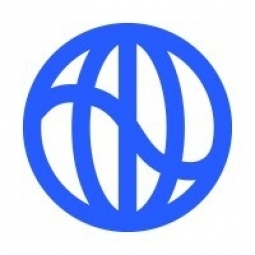Technology Category
- Platform as a Service (PaaS) - Application Development Platforms
- Sensors - Utility Meters
Applicable Industries
- Consumer Goods
- Retail
Applicable Functions
- Logistics & Transportation
- Sales & Marketing
Use Cases
- Continuous Emission Monitoring Systems
- Supply Chain Visibility
About The Customer
Klarna is a leading provider of Buy Now, Pay Later shopping experiences, serving 147 million consumers and 400,000 merchants. The company's mission is to bring consumers shopping flexibility, but it also aims to support a healthy planet. Klarna is committed to making shopping a less carbon-intensive activity for all. The company has a significant carbon footprint due to its large customer base and the nature of its operations. Klarna is committed to reducing its carbon emissions and making its operations more sustainable.
The Challenge
Klarna, a leading provider of Buy Now, Pay Later shopping experiences, was faced with the challenge of making their operations more sustainable. With 147 million consumers and 400,000 merchants using their platform, the company had a significant carbon footprint. The challenge was to understand the extent of their carbon emissions and find ways to reduce them. The company needed to measure the carbon emissions from their operations and supply chain, and then take steps to reduce these emissions. They also wanted to align their everyday business decisions with the goal of reducing emissions.
The Solution
Klarna started by measuring their carbon emissions to understand the extent of their carbon footprint. They then took steps to reduce their emissions, such as converting two-thirds of their offices to run on clean energy and tracking the intensity of their emissions relative to business metrics like revenue. The company also introduced an internal carbon tax, setting aside $100 for every tonne of emissions from their facilities, operations, purchased electricity, and travel, and $10 per tonne for activities happening in their supply chain. This tax was used to fund high-impact climate work. Klarna also used Watershed to gather emissions data on their largest vendors and partners, helping them understand where they could make the most impact. In addition, Klarna launched the Give One Initiative, pledging to dedicate 1% of all newly raised funds to planet health action.
Operational Impact
Quantitative Benefit

Case Study missing?
Start adding your own!
Register with your work email and create a new case study profile for your business.
Related Case Studies.
.png)
Case Study
Improving Vending Machine Profitability with the Internet of Things (IoT)
The vending industry is undergoing a sea change, taking advantage of new technologies to go beyond just delivering snacks to creating a new retail location. Intelligent vending machines can be found in many public locations as well as company facilities, selling different types of goods and services, including even computer accessories, gold bars, tickets, and office supplies. With increasing sophistication, they may also provide time- and location-based data pertaining to sales, inventory, and customer preferences. But at the end of the day, vending machine operators know greater profitability is driven by higher sales and lower operating costs.

Case Study
Improving Production Line Efficiency with Ethernet Micro RTU Controller
Moxa was asked to provide a connectivity solution for one of the world's leading cosmetics companies. This multinational corporation, with retail presence in 130 countries, 23 global braches, and over 66,000 employees, sought to improve the efficiency of their production process by migrating from manual monitoring to an automatic productivity monitoring system. The production line was being monitored by ABB Real-TPI, a factory information system that offers data collection and analysis to improve plant efficiency. Due to software limitations, the customer needed an OPC server and a corresponding I/O solution to collect data from additional sensor devices for the Real-TPI system. The goal is to enable the factory information system to more thoroughly collect data from every corner of the production line. This will improve its ability to measure Overall Equipment Effectiveness (OEE) and translate into increased production efficiencies. System Requirements • Instant status updates while still consuming minimal bandwidth to relieve strain on limited factory networks • Interoperable with ABB Real-TPI • Small form factor appropriate for deployment where space is scarce • Remote software management and configuration to simplify operations

Case Study
Digital Retail Security Solutions
Sennco wanted to help its retail customers increase sales and profits by developing an innovative alarm system as opposed to conventional connected alarms that are permanently tethered to display products. These traditional security systems were cumbersome and intrusive to the customer shopping experience. Additionally, they provided no useful data or analytics.

Case Study
How Sirqul’s IoT Platform is Crafting Carrefour’s New In-Store Experiences
Carrefour Taiwan’s goal is to be completely digital by end of 2018. Out-dated manual methods for analysis and assumptions limited Carrefour’s ability to change the customer experience and were void of real-time decision-making capabilities. Rather than relying solely on sales data, assumptions, and disparate systems, Carrefour Taiwan’s CEO led an initiative to find a connected IoT solution that could give the team the ability to make real-time changes and more informed decisions. Prior to implementing, Carrefour struggled to address their conversion rates and did not have the proper insights into the customer decision-making process nor how to make an immediate impact without losing customer confidence.









